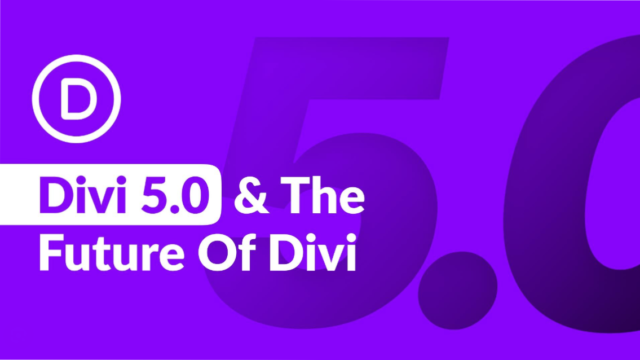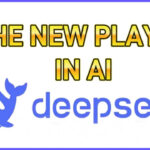Picture this: a world where artificial intelligence seamlessly integrates into every nook and cranny of the financial industry, making decisions with the efficiency and precision of a superhero accountant. Sounds like the stuff of sci-fi movies, doesn’t it? Yet, it’s our current reality. AI is everywhere in the financial sector, powering everything from credit scoring to anti-money laundering (AML) monitoring. It’s like having an all-knowing, all-seeing digital guardian keeping an eye on every transaction. But—here’s the twist—like every superhero story, AI’s powers come with their own set of risks. What if it makes a biased decision? Or, horror of horrors, what if it misreads the data, leading to a catastrophic financial error? Here come hero of the day: the KAIRI Framework, a groundbreaking approach to keeping AI on the ethical and responsible path. For that matter, the AI risk management in financial services is essential for ensuring that artificial intelligence technologies are deployed safely and ethically. By executing KAIRI Frameworks, companies can effectively oversee AI operations, focusing on principles such as sustainability, accuracy, fairness, and explainability
The Urgency of AI Risk Management
Before diving into the nitty-gritty of the KAIRI Framework, let’s take a step back and understand why AI risk management is such a hot topic. AI isn’t just a buzzword; it’s a transformative force in financial services. Whether it’s automating mundane tasks or predicting market trends, AI helps banks, insurance companies, and investment firms make faster, more informed decisions. But just like any powerful tool, AI can have unintended consequences if not handled correctly. Recent studies show that nearly 80% of financial institutions have already integrated AI into their operations. Yet, here’s the kicker: only about 30% of these institutions have a robust AI risk management framework in place. So, while AI promises greater efficiency, the lack of comprehensive risk management poses significant threats—think biases in credit approvals or failure to detect fraudulent activities.
Imagine you’re using an AI system for credit scoring, and it ends up discriminating against certain groups because of biased data. Not only does this lead to unfair treatment, but it also violates ethical standards and could run afoul of regulatory requirements. This is why having a solid AI risk management framework isn’t just a nice-to-have; it’s essential. And that’s where the KAIRI Framework comes into play.
What is the KAIRI Framework?
KAIRI, which stands for Key Artificial Intelligence Risk Indicators, is a framework specifically designed to evaluate, monitor, and reduce risks associated with AI in the financial sector. KAIRI focuses on four key principles that can be remembered with the acronym SAFE: Sustainability, Accuracy, Fairness, and Explainability. For each of these principles, KAIRI suggests a detailed set of statistical metrics, offering a holistic strategy for evaluating the trustworthiness of AI applications. The goal? To ensure AI systems not only operate efficiently but also adhere to ethical and regulatory standards.
Breaking Down the Four Pillars of KAIRI
- Sustainability: Now, we’re not just talking about environmental sustainability, although that’s a part of it. In the world of AI, sustainability also means developing systems that are socially responsible and capable of evolving over time to stay relevant and effective.
- Accuracy: Accuracy is the cornerstone of any AI system. If the AI isn’t accurate, everything else falls apart. KAIRI emphasizes the need to validate and test AI models consistently to ensure they produce reliable and consistent results.
- Fairness: AI has often been criticized for its potential to perpetuate bias. Remember the stories about biased hiring algorithms or skewed loan approvals? KAIRI’s fairness principle is about making sure AI decisions are just and equitable, eliminating biases that could lead to unfair treatment.
- Explainability: Have you ever tried to figure out how a complex AI model made a decision? It can feel like trying to decipher an alien language. Explainability is about ensuring that AI decisions are understandable by humans. If you can’t explain how a decision was made, how can you trust it?
KAIRI vs. Other AI Risk Management Frameworks
With so many frameworks out there addressing AI risk, you might wonder what sets KAIRI apart. Let’s take a look at how it stacks up against some of the other big players:
NIST AI Risk Management in Financial Services Framework (AI RMF)
The National Institute of Standards and Technology (NIST) has its own AI Risk Management Framework focused on embedding trustworthiness into AI systems. Developed through a consensus-driven process, NIST’s framework aims to manage risks that AI poses to individuals, organizations, and society. While comprehensive, it’s a one-size-fits-all approach that might not delve deeply into the specific needs of financial services. Think of it as a Swiss Army knife—versatile but not specialized.
Boston Consulting Group’s (BCG) Approach to AI Governance
BCG takes a broader perspective, focusing on Responsible AI (RAI). They highlight the complexities of AI governance given the diverse range of emerging laws and governance mechanisms. BCG’s approach is to help organizations navigate this landscape to create value while managing risks. However, because it’s so broad, it may lack the specific focus required for the unique challenges faced by the financial sector.
Deloitte’s Trustworthy AI Framework
Deloitte’s framework promotes six characteristics of trustworthy AI: fairness, robustness, privacy, security, accountability, and transparency. These align closely with KAIRI, especially on fairness and explainability. Yet, similar to NIST and BCG, Deloitte’s approach is more generalized. It’s great for providing overarching guidance but doesn’t get into the financial industry’s nitty-gritty details.
Why KAIRI is the Right Fit for Financial Services
KAIRI’s Framework emphasis on the SAFE principles makes it particularly well-suited for the financial industry. It’s like having a custom-made suit, tailored specifically to fit the unique challenges of financial services. By focusing on sustainability, accuracy, fairness, and explainability, KAIRI ensures that AI systems are not only efficient but also align with ethical standards and regulatory mandates that are specific to finance.

Real-World Applications: KAIRI in Action
Enough with the theory—let’s see KAIRI in action. This isn’t just some abstract concept; it has been tested in real-world scenarios to prove its effectiveness. Here are a few case studies where KAIRI has made a difference:
1. Credit Scoring
We’ve all had those nerve-wracking moments waiting to find out if we’re approved for a loan. AI systems are increasingly used to determine credit scores by analyzing vast amounts of data to gauge creditworthiness. KAIRI can ensure these AI systems are both accurate and fair. Imagine if an AI system unintentionally lowers the scores for certain demographic groups due to biased data. KAIRI’s fairness and explainability principles help identify, rectify, and clarify these biases, ensuring fair credit assessments for everyone.
2. Anti-Money Laundering (AML) Transaction Monitoring
Money laundering is a global issue, with the United Nations Office on Drugs and Crime estimating that $800 billion to $2 trillion is laundered annually. AI systems can help detect suspicious transactions, but they must be accurate to avoid flagging legitimate transactions as fraudulent. KAIRI’s accuracy and explainability principles ensure that AI systems used in AML are both precise and transparent, reducing false positives and making it easier for compliance teams to understand why certain transactions were flagged.
3. IT Systems Surveillance
In the financial sector, ensuring the security of IT systems is crucial—especially when breaches can lead to massive financial losses or compromised customer data. KAIRI’s sustainability principle ensures that AI systems used for IT surveillance are not only effective today but can adapt to future threats. The accuracy and explainability principles further guarantee that these systems provide reliable alerts and that their operations are understandable to IT professionals.
4. Anomaly Detection in Parmesan Cheese Production
Now, this might sound a bit cheesy, but stick with me! Imagine using AI to detect anomalies in cheese production to maintain quality. Even in such a specific context, the KAIRI framework applies to ensure the AI systems are sustainable, accurate, fair (yes, even cheese production shouldn’t have biases!), and explainable. The SAFE principles aren’t just limited to finance; they’re universal across industries.
How Does KAIRI Work? The Research Methodology
You’re probably wondering how KAIRI manages to do all this. What’s the magic behind the curtain? The secret lies in its innovative approach to AI risk measurement, which incorporates statistical metrics to evaluate the SAFE principles. This methodology offers a structured way to assess the risks associated with AI, balancing technical robustness with ethical considerations.
For example, to ensure fairness, KAIRI might use statistical measures like demographic parity or equalized odds to check for bias in decision-making. To verify accuracy, it could apply metrics such as precision and recall to gauge the AI’s performance. For sustainability, lifecycle analyses can be used to confirm that AI systems are not only efficient but also socially and environmentally responsible. And for explainability, KAIRI might use tools like SHAP (Shapley Additive exPlanations) values to make AI decisions more understandable.
By applying these metrics across various case studies, KAIRI demonstrates its flexibility and effectiveness in fostering safe AI applications. But it’s not without its challenges—implementing such a comprehensive framework can be complex and resource-intensive. This points to the need for continued research to optimize KAIRI’s application and make it more accessible to organizations.
Why KAIRI Matters: Broadening the Conversation
The findings from the KAIRI framework highlight the need for a comprehensive approach to AI risk management, especially in financial services. By merging ethical principles with statistical measures, KAIRI ensures that AI applications are not just effective but also equitable and transparent. This aligns perfectly with the growing global focus on ethical AI, reflected in initiatives like the European Union’s AI regulatory proposals and the increasing demand for transparency from the public.
If you’re interested in delving deeper into AI risk management, you might find value in reading “Ethics of Artificial Intelligence and Robotics” by Vincent C. Müller, which explores the philosophical roots of ethical AI. For a more industry-specific perspective, consider “AI and Risk Management in Financial Services” by the World Economic Forum, which offers insights into the specific challenges and solutions for AI in finance. These resources not only support the need for frameworks like KAIRI but also broaden the discussion about AI’s ethical and practical roles across different sectors.
The Hurdles: Implementing KAIRI in the Real World
Okay, so KAIRI sounds fantastic on paper, but what about in practice? Implementing a comprehensive framework like KAIRI comes with its set of challenges. Developing and integrating the necessary statistical metrics to evaluate AI risks can be daunting. Financial institutions may need to invest in specialized talent and technology to implement KAIRI effectively. Additionally, the computational power required to run these assessments regularly can be significant, demanding robust IT infrastructure.
Despite these challenges, the benefits of adopting KAIRI far outweigh the drawbacks. By implementing KAIRI, financial institutions can protect themselves from AI-related risks and enhance their reputation as ethical and responsible organizations. In a world where consumers are increasingly concerned about how their data is used and how decisions are made, demonstrating adherence to SAFE principles can offer a competitive advantage.
Looking Ahead: The Future of KAIRI in Research and Policy
The KAIRI framework’s introduction has profound implications for both research and policy-making. On the research front, there’s a need to continue developing and refining KAIRI to make it more scalable and applicable across different industries. Future studies could also focus on creating streamlined methodologies for assessing AI risks, making it easier for organizations to adopt effective AI risk management practices.
In terms of policy, frameworks like KAIRI can play a crucial role in shaping AI regulations and guidelines. As AI becomes increasingly integrated into essential sectors such as finance, healthcare, and governance, having clear and enforceable standards will be vital to ensure that AI technologies are developed and used ethically. The global harmonization of AI risk management standards could also be a future goal, creating a consistent approach to managing AI risks across different countries and regions.
Conclusion: The Path Forward with KAIRI
To wrap things up, the KAIRI framework provides a powerful tool for managing AI risks in financial services. By focusing on sustainability, accuracy, fairness, and explainability, KAIRI offers a comprehensive method for evaluating the trustworthiness of AI applications. However, as AI technology continues to evolve, so too must our approach to managing its risks. KAIRI represents a significant advancement, but it’s just the starting point. Ongoing research, policy development, and real-world application will be essential to ensuring that AI technologies remain effective, ethical, and responsible.
As we navigate the increasingly complex landscape of AI risk management, one thing is clear: frameworks like KAIRI will be instrumental in shaping the future of AI in ways that benefit everyone. So, whether you’re a financial institution looking to implement AI, a policymaker working on regulations, or just someone intrigued by the future of technology, keep an eye on KAIRI—it’s leading the way in making AI safer and more trustworthy.
Key Takeaways
- The KAIRI framework is designed to manage AI risks in financial services by focusing on the principles of sustainability, accuracy, fairness, and explainability (SAFE).
- Compared to other AI risk management frameworks, KAIRI offers a targeted approach specific to the financial sector, providing a balance between technical robustness and ethical considerations.
- Real-world applications of KAIRI, such as credit scoring and anti-money laundering, demonstrate its effectiveness in promoting safe and reliable AI usage.
- Implementing the KAIRI framework can be complex and requires specialized skills and infrastructure, but the benefits of enhanced AI safety and trustworthiness are significant.
- Future research and policy development will be essential to optimize and expand the KAIRI framework, ensuring AI technologies are developed and deployed ethically and responsibly.
FAQs
1. What is the KAIRI framework?
The KAIRI (Key Artificial Intelligence Risk Indicators) framework is designed to evaluate, oversee, and reduce AI risks in the financial sector. It focuses on four main principles: sustainability, accuracy, fairness, and explainability (SAFE).
2. How does KAIRI differ from other AI risk management frameworks?
While other frameworks like NIST and Deloitte’s Trustworthy AI provide general guidelines for AI risk management, KAIRI is specifically tailored for the financial sector, offering a targeted approach to managing AI risks based on ethical and regulatory standards.
3. Can the KAIRI framework be applied outside of financial services?
Yes, while KAIRI is particularly well-suited for financial services, its principles can be adapted to other industries. The framework’s focus on sustainability, accuracy, fairness, and explainability makes it applicable to any sector that uses AI and requires robust risk management strategies.
Journal Reference
Giudici, P., Centurelli, M., & Turchetta, S. (2024). Artificial Intelligence risk measurement. Expert Systems with Applications, 235. https://doi.org/10.1016/j.eswa.2023.121220










